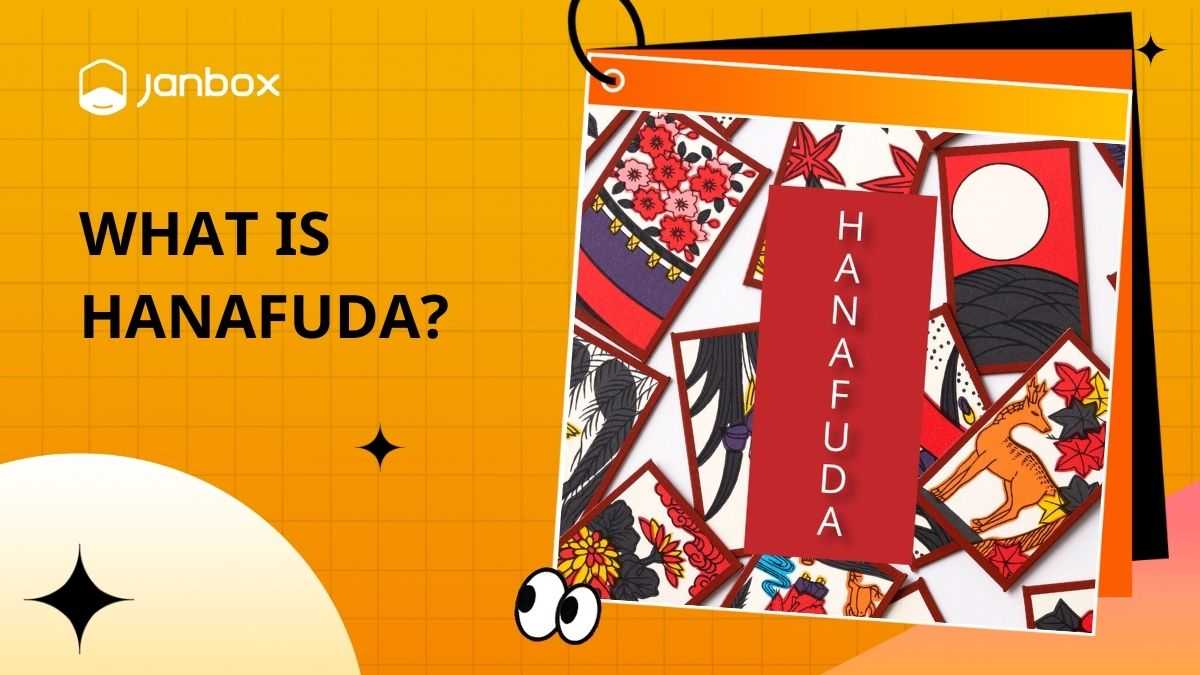What is Hanafuda? Hanafuda, which translates to “flower cards,” is a traditional Japanese card game celebrated for its symbolic depth and artistry. Learning Hanafuda can be a fulfilling experience for beginners, blending Japanese cultural insights with enjoyable gameplay. This blog will give an introduction to “What is Hanafuda”, including its history, rules, and best places to buy original Hanafuda cards.
1. What is Hanafuda?
Hanafuda meaning is also known as Hanakaruta (花かるた), is a traditional Japanese card game. The motifs on the card are birds, flowers, and clouds with the characteristics of the 12 months of the year in Japan.
Each Hanafuda deck consists of 48 cards. Vietnamese people in Japan often call this deck with a very lovely name “Chinese card”, because “hana” in Japanese is “flower”. Previously, the Hanafuda was a game only for aristocrats or samurai, but gradually it was popularized among the common people and has now become the national game of Japan.
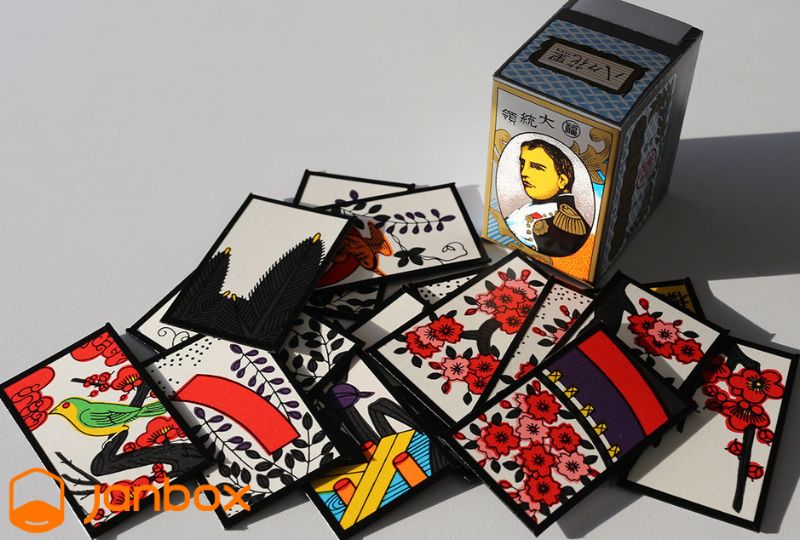
A deck of Hanafuda cards usually has many different ways of playing and so does Hanafuda. there are 3 most popular ways to play: “Koikoi” for 2 people, “Hana Awase” for 3 people, and “Haha” for groups of 3-7 people. Many people commented that Hanafuda is a mind game that requires intuition, ingenuity, and calm.
1.1. Hanafuda history
Hanafuda is said that during the Azuchi-Momoyama period (1568 – 1600) European culture began to be introduced to Japan by missionaries such as guns, Castella cakes,… and certainly, there were games related to cards. The Japanese word “Karuta” is derived from the Portuguese word “Carta”, which is the word used to refer to the traditional hanafuda cards.
During the Tensho period (1573 – 1592), Japan produced the first deck of cards based on the Portuguese deck, called Tensho Karuta. By 1633 (Edo Period), Japan was closed to the West, leading to foreign card games being banned.
The ban on playing cards became stricter in the second half of the 18th century, especially during the Kansei reform. For that reason, people have created many different types of cards to circumvent the law. The shogunate government also quickly banned it soon after. However, bakuto (professional gamblers) keeps coming up with various rules and scoring methods to blind the authorities.
After a long ban, the government also realized that its measures seemed pointless because each time they banned the card players came up with other ways to circumvent the law. That’s why cards with pictures, no numbers, and no points can be played legally, including the Hanafuda. Gradually, Hanafuda became popular and became the traditional Japanese game it is today.
1.2. Types of Hanafuda
Some types of Hanafuda cards in Japan:
– Hachihachi Hana (八八花): This Hanafuda type of card was created during the Meiji period, and is widely used throughout Japan to this day.
– Hokkai Hana (北海花): Hanafuda card of the Hokkaido region.
– Echigo Hana (越後花): Hanafuda card used in and around Niigata Prefecture.
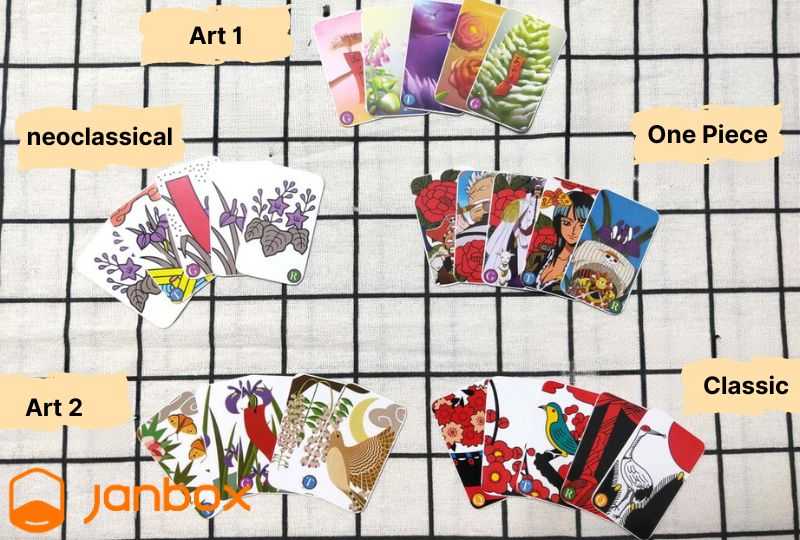
– Echigo Kohana (越後小花): Hanafuda is played in the Joetsu region of Niigata Prefecture, smaller in size than a regular deck of cards. In particular, the Echigokohana deck also has 3 more demon cards “Onifuda” (鬼札), but nowadays not many people know how to play these 3 cards anymore.
– Echizen Hana (越前花): Hanafuda card from Fukui Prefecture, there are many mysteries surrounding this deck.
– Kintoki Hana (金時花): flower card of the Shikoku region. The origin of the name Kintoki Hana is said to be because in the deck there is the demon card Kintaro, which has the same function as the Joker in Poker. In addition, this deck is also known as Awa Hana because it is believed that this deck was created in Tokushima Prefecture and Awa is the old name for Tokushima Prefecture before the Meiji period.
– Oshu Hana (奥州花) or Yamagata Hana (山形花): a type of Hanafuda card game from the Tohoku region, played mainly in Yamagata Prefecture. The feature of this deck is that 1 of the 2 Kasu cards of each month will have a black dot.
1.3. Some Symbols In Hanafuda
The game of Hanafuda in Japan is associated with a range of symbols, most notably 12 flowers that represent the months. Each flower carries its own meaning and importance, with a complete deck including all 12 flowers used for gameplay. If you are wondering about “What is Hanafuda’s diversity in symbols”, here it is:
– The Pine and Crane Flowers:
The pine tree, symbolizing strength, pairs with the crane, which represents a long life and fortune. Combined, they convey the hope associated with January and the new year. In Hanafuda, these symbols correspond to the suits of winter and spring.
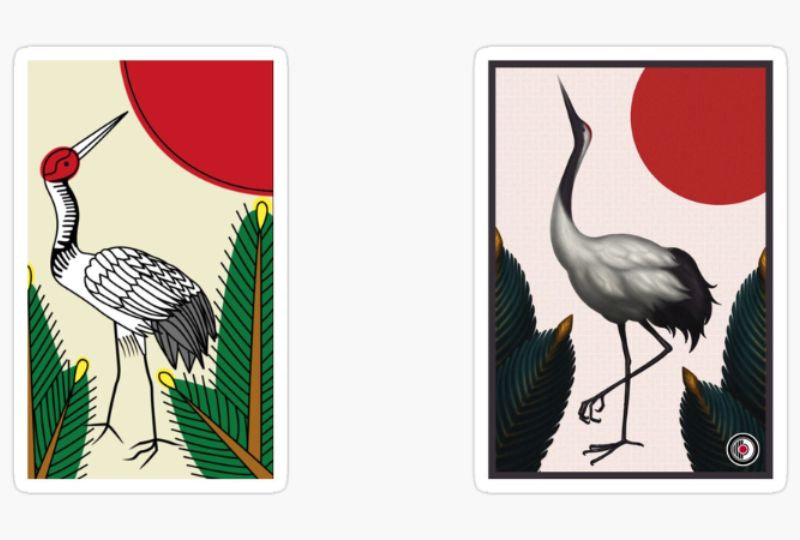
– Tanzaku Hanging on a Plum Tree:
Representing February, the Tanzaku hanging from a plum tree signifies hope and the renewal of spring. The plum tree itself is a symbol of strength and resilience, and the Tanzaku serves as a reminder of the fortitude required to face life’s obstacles.
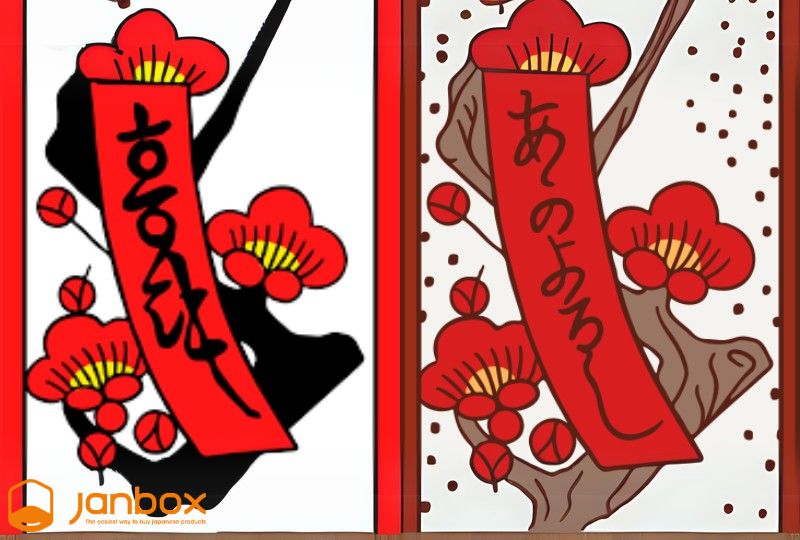
– Curtain and Cherry Blossoms:
Associated with March, the curtain and cherry blossoms both celebrate the beginning of spring. The curtain reflects fresh starts, while cherry blossoms reflect the delicate beauty of life, together symbolizing the season’s hope and renewal.
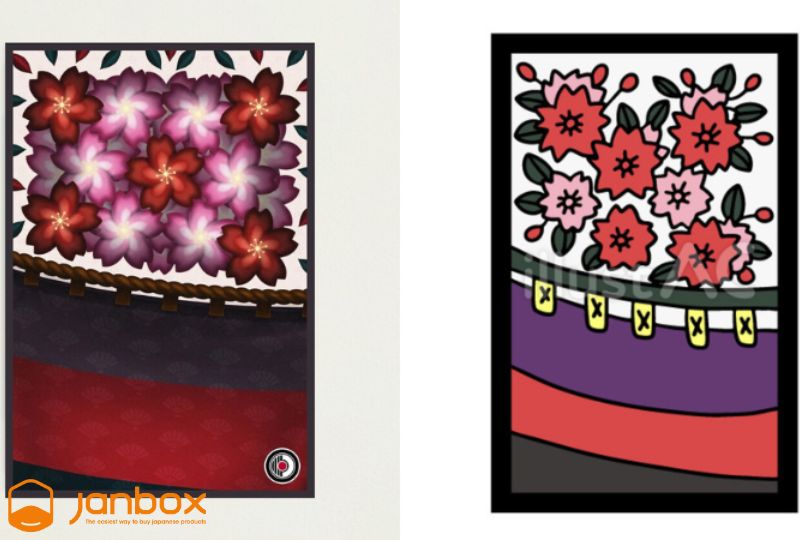
– Wisteria Blossom:
The wisteria blossom, with its slender purple petals and delightful fragrance, represents April and the theme of renewal. It signifies fresh beginnings, often blooming as winter ends. This lovely flower serves as a symbol of hope, reminding us that spring is just around the corner.
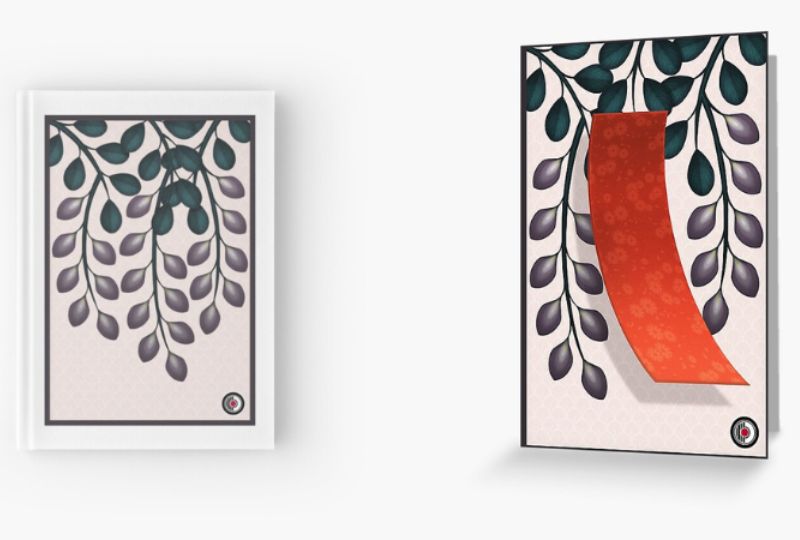
– The Iris Blossom:
Blooming in early to mid-spring, the iris is a perennial flower whose name, meaning “rainbow” in Greek, reflects its vibrant colors. These flowers are often associated with May, as they are among spring’s earliest blooms. The iris is also connected to faith, wisdom, and courage—qualities that help us through tough periods. Whether in a garden or as a gift, irises bring a sense of beauty and hope.
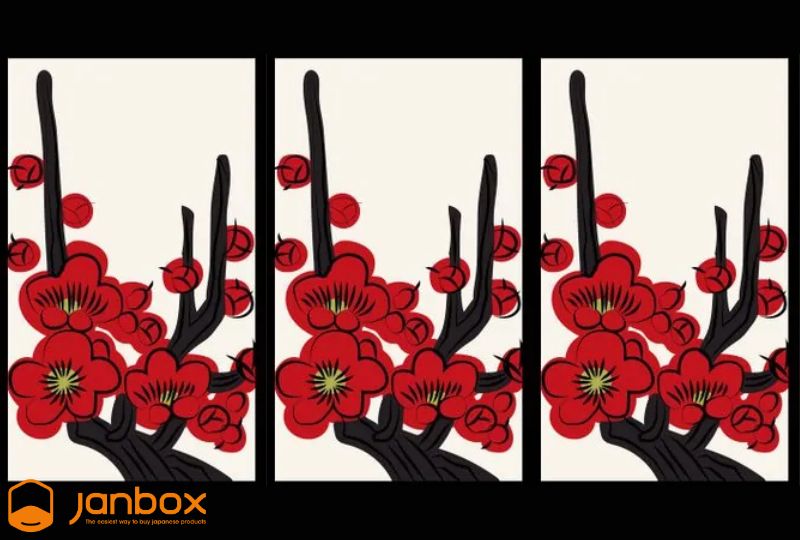
>>> Read more: Jinsei game | Special board game in Japan | Gameplay
2. The structure of Hanafuda
A deck of Hanafuda cards consists of 48 cards, divided into 12 months of the year with each month being 4 cards represented by images of plants, flowers, animals, and typical weather of that month. Similar to Western cards, Hanafuda cards also include 4 elements: Kasu, Tanzaku, Tane, and Hikari.
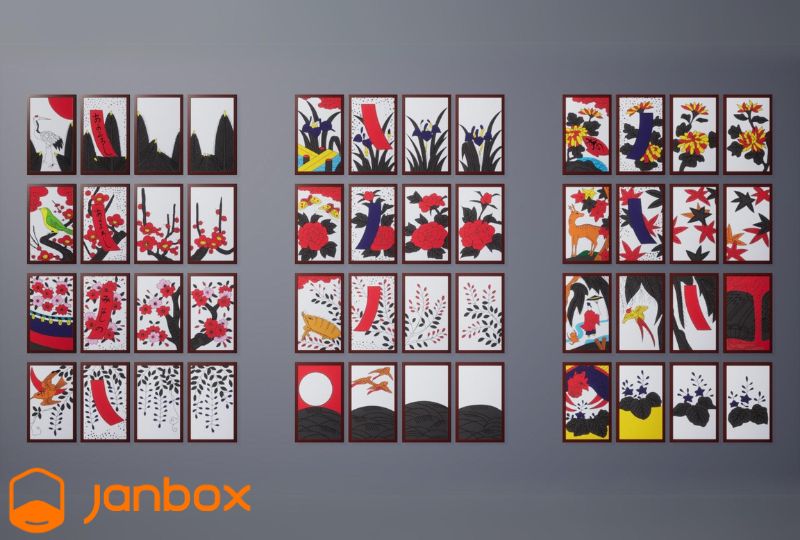
Here are the Hanafuda cards meaning:
– Kasu (カス): meaning “garbage”, is the card with the lowest score, only 1 point. The image of Kasu is usually a tree or flower standing alone, each month will have 2 or 3 Kasu leaves.
– Tanzaku (短冊): Tanzaku in Japanese means long pieces of paper for people to write poems or wishes on. Tanzaku in Hanafuda deck has 5 cards, including 2 types: Akatan (赤短) with a red piece of paper and Aotan (青短) with a purple piece of paper. Each of these cards is 5 points.
– Tane (タネ): Tane cards usually have an animal or an object symbolizing Japanese culture. Tane has a total of 9 cards, each worth 10 points.
– Hikari (光): these are the highest cards with 20 points each and each Hanafuda deck will have 5 Hikari cards.
3. An Overview About The Flower Cards Game Industry In Japan
Hanafuda cards are produced by various companies, each bringing unique designs and styles. Nintendo leads in popularity, offering Nintendo playing cards Hanafuda with diverse themes and characters, with Konami and Takara Tomy also producing notable sets.
Competition in the Hanafuda industry is strong, with various companies fighting for market position. The Hanafuda industry is also subject to rigorous regulation, with strict guidelines on the production and sales process. Moreover, this industry is flourishing, providing a diverse range of products. Whether you are after game-ready cards or collector’s items, there’s plenty to explore.
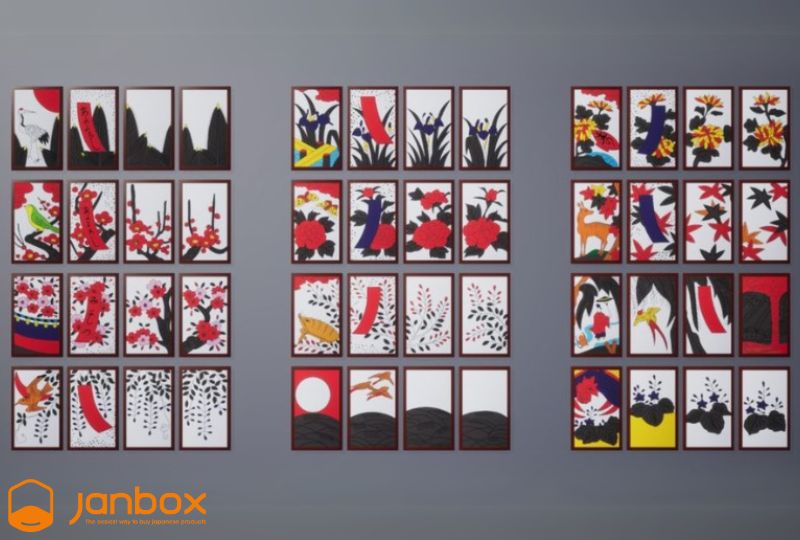
4. What Makes Hanafuda So Popular In Japan?
What is Hanafuda’s popularity made of? These are 3 main reasons:
- The Hanafuda cards are beautifully detailed, with each suit representing one month of the year and depicting a seasonal plant.
- Hanafuda is a centuries-old Japanese card game, steeped in history and tradition.
- Playing Hanafuda is a delightful experience, with the card combinations holding greater point value, even if the points of individual cards do not always play a central role.
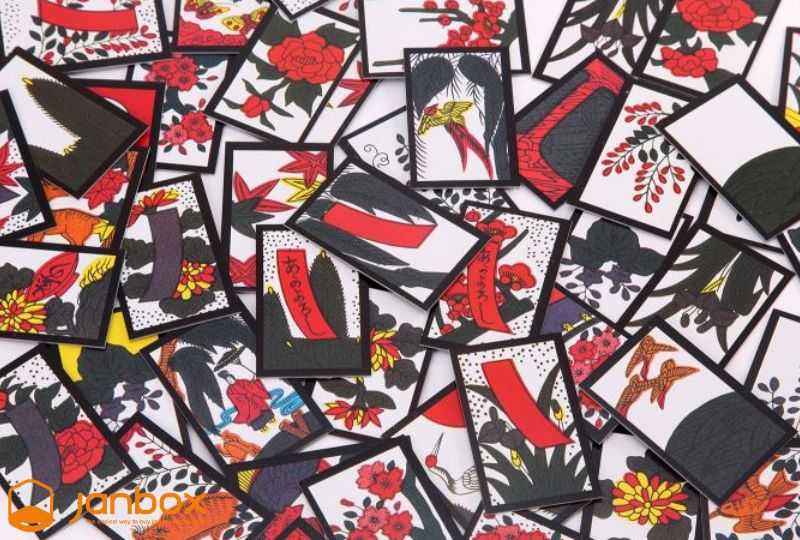
5. The Future Of Hanafuda In Japan
Without a doubt, Hanafuda will stay popular in Japan for a long time. The game’s historical and cultural significance means it will likely endure, even if the way it’s played undergoes some changes in the future.
While Hanafuda may not be as widely popular as in the past, changing times haven’t diminished demand for it. Traditional games like Hanafuda have experienced a recent resurgence, keeping them relevant. The future of Hanafuda will likely resemble the present, loved by those who appreciate its elegance and nostalgic qualities.
>>> Read more: How to play Machi Koro? [Step-by-Step Guide]
6. How to play Hanafuda?
To understand how to play flower cards, players need to know the rules of the cards, or Hanafuda instructions. Besides, there are the basic settings of the table and detailed rules of Hanafuda. Here is Hanafuda how to play that you should not ignore. Specifically:
6.1. Set up the table
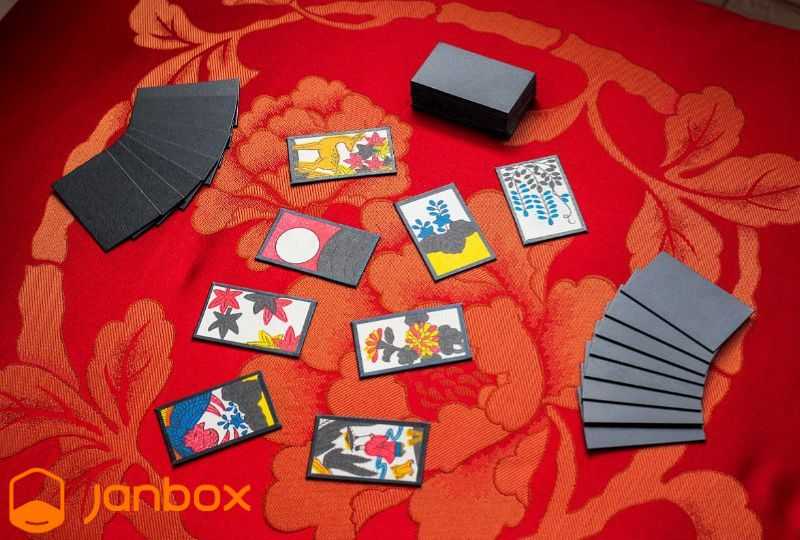
Setting up before playing is extremely important to find the Banker. The two participating players will randomly select a card from the deck. Whoever draws the card with the smallest month will act as the Banker (or Oya-san).
The dealer will deal with the cards and be the first to play according to Hanafuda’s instructions. Therefore, this is an advantage that every player wants to grasp. The dealer will deal 8 cards to each player. At the same time, spread 8 more cards face down under the table (playing floor). The remaining cards are placed face-down in the center of the playing field.
6.2. Before Hanafuda starts
Before you start playing, you need to check if you have won or not. Specifically: Check 8 cards open on the floor with a 4-card set in 1 month when it will need to be dealt again. If there are ¾ cards of the month on the deck, the person with the last card will receive all the cards of the month.
In addition, players also check the cards in their hands. If you find yourself with the Yaku set right away, Hanafuda will be over and the score will be calculated as follows:
- Teshi: 4 cards of the same month are counted as 6 points.
- Kuttsuki: 2 cards from 4 different months count for 6 points.
6.3. Detailed Hanafuda game rules
The first turn is for the Banker. The dealer will hit a piece to the floor. If that piece coincides with a month on the Floor, the player can take that piece. At that time, you need to put the captured card in your area and face up.
If there are 2 cards that match the month in your hand, you have the right to choose 1 of those 2 cards. If there are 3 pieces in the same month, the player has the right to catch them all. Besides, if there are no cards matching the cards on the Deck, you need to leave that card down and proceed to draw cards from the pile.
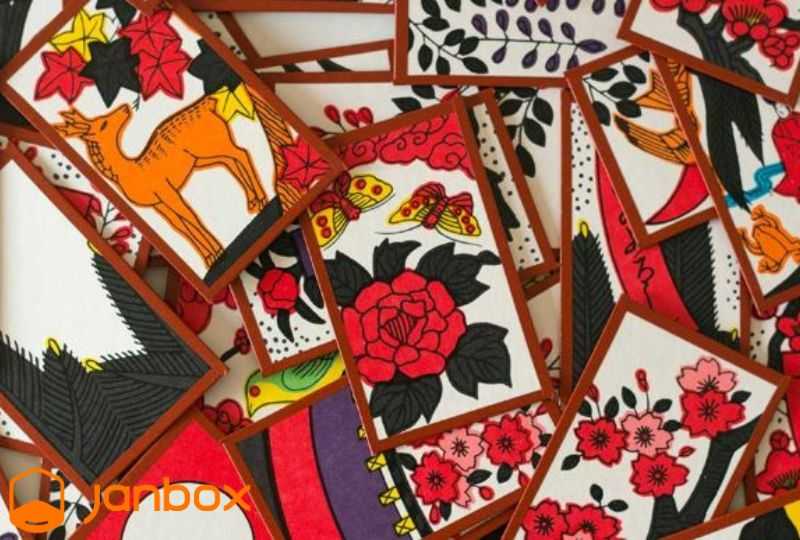
If the card you just drew matches the face-up cards, you have the right to catch it. And if the cards you just picked do not match any cards you put them on the floor. After the turn is over, it will be the next player’s turn. Hanafuda will end when 1 person creates 1 Yaku. This person will be selected 1 of 2 cases below:
- Case 1: End Hanafuda and proceed to calculate the score. Points will be calculated according to Yaku points and the opponent will not receive any points.
- Case 2: Continue playing, also known as Koi Koi with the desire to create more Yaku with higher scores. Hanafuda will continue until another Yaku is formed. If the opponent has Yaku, the score will be doubled and you will not receive any points.
>>> Read more: 10+ most popular Japanese board games from the Janbox list
6.4. End of Hanafuda
Some of Hanafuda cards end when a player forms a Yaku and may not continue playing if the Deck runs out of cards to draw. In the end, there will be two outcomes: Draw or Win. The winner will be the player with the highest score.
The number of points received will be calculated by the sum of the Yaku that the winner has created during the fight. Usually, the case of a Draw is when 2 players play Koi Koi but then can’t create more Yaku, then a tie, called Nagare, and neither side will get a point.
6.5. How to calculate the score of decks that reach Yaku?
Players need to know the decks that get Yaku and the number of points they get. Here, W88 will provide the score corresponding to each deck as follows:
If the deck corresponds to 10 points:
- Akatan, Aotan no Chofuku: the player collects couplet-shaped cards
- Gokou is called the Five Lights, which means that the player will have all the first cards of the months 1, 3, 8, 11, and 12.
If the Hanafuda deck corresponds to 8 points: Shiko is called the Four Lights, ie the player will collect the first cards of the months 1, 3, 8, and 12.
If the deck corresponds to 7 points: Ame – Shiko the player collects any 4 Hikari cards and must contain Michikaze cards.
If Hanafuda deck corresponding to 5 points will include the following cases:
- Sanko: called Tam Quang consists of any 3 leaves of light
- Akatan: the player gets 3 cards with couplets with the words above them.
- Aotan: player collects 3 cards with purple couplets
- Inoshikacho: the player collects 3 cards in the shape of a wild boar, deer, and butterfly.
- Hanamizake: the player collects 2 cards of which 1 is the Hikari of March and 1 is shaped like a wine glass.
- Tsukimizake: The player has a deck of 2 cards, one of which is a moon-shaped Hikari and a cup-shaped card.
Lastly, if the deck corresponds to 1 point in the following cases:
- Tane: the player will collect 5 Tane cards and each additional Tane card drawn will correspond to 1 point.
- Tanzaku: the player with any 5 Tan cards and each additional Tan card drawn will respectively add 1 point.
- Kasu: the player collects a set of 10 Kasu cards and each additional kasu card gets 1 point respectively.
7. Buying Japanese Hanafuda Cards on Janbox
With English-language and user-friendly interface, Janbox not only helps you order the Hanafuda easily, but also brings you many benefits such as:
- Experienced and dedicated staffs are ready to assist you in finding quality and cheap products at any time you need.
- Prestigious transportation insurance, diversified payment.
- Quick delivery time: Just only 7-9 days and you will receive your package straight from Japan!.
- Market competitive service fees and many attractive incentive programs.
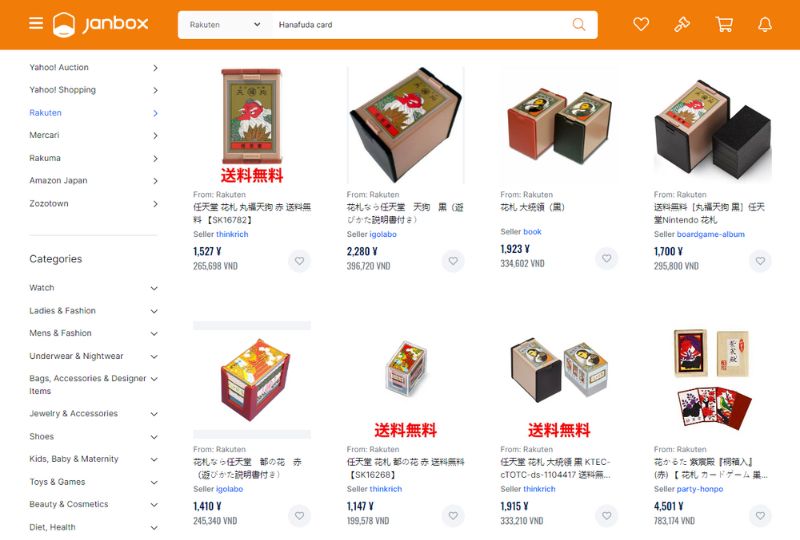
With just 4 simple steps, you can get the goods effortlessly. Here is how:
– Step 1: Register an account
Download the Janbox app to your phone (Or use Janbox website), and register for a Janbox account to proceed with the ordering steps.
– Step 2: Search for products
Type the product keyword you want to buy or paste the product link you want to buy into the search bar of Janbox.
– Step 3: Place an order, make the first payment
After finding the product to buy, you add the product to the cart and make the first payment (including the purchase fee and the product price).
– Step 4: Make the 2nd payment and receive the goods
Janbox will make orders from Japan to Vietnam according to your requirements. After a few days, the goods will return to Vietnam, you need to pay the 2nd time (including shipping and other service fees) and receive the goods.
>>> Read more: How To Buy From Rakuten Japan? [Guide Step-by-step]
Conclusion
Now that you have understood “What is Hanafuda“, you are ready to appreciate both the artistic beauty and strategy that Hanafuda offers. The game’s symbolic cards and complex rules make it a journey well worth experiencing. We hope this blog has enhanced your knowledge, and we wish you success in becoming a Hanafuda master. Visit Janbox now to bring the best Hanafuda card deck home!
Website: https://janbox.com
Email: [email protected]

